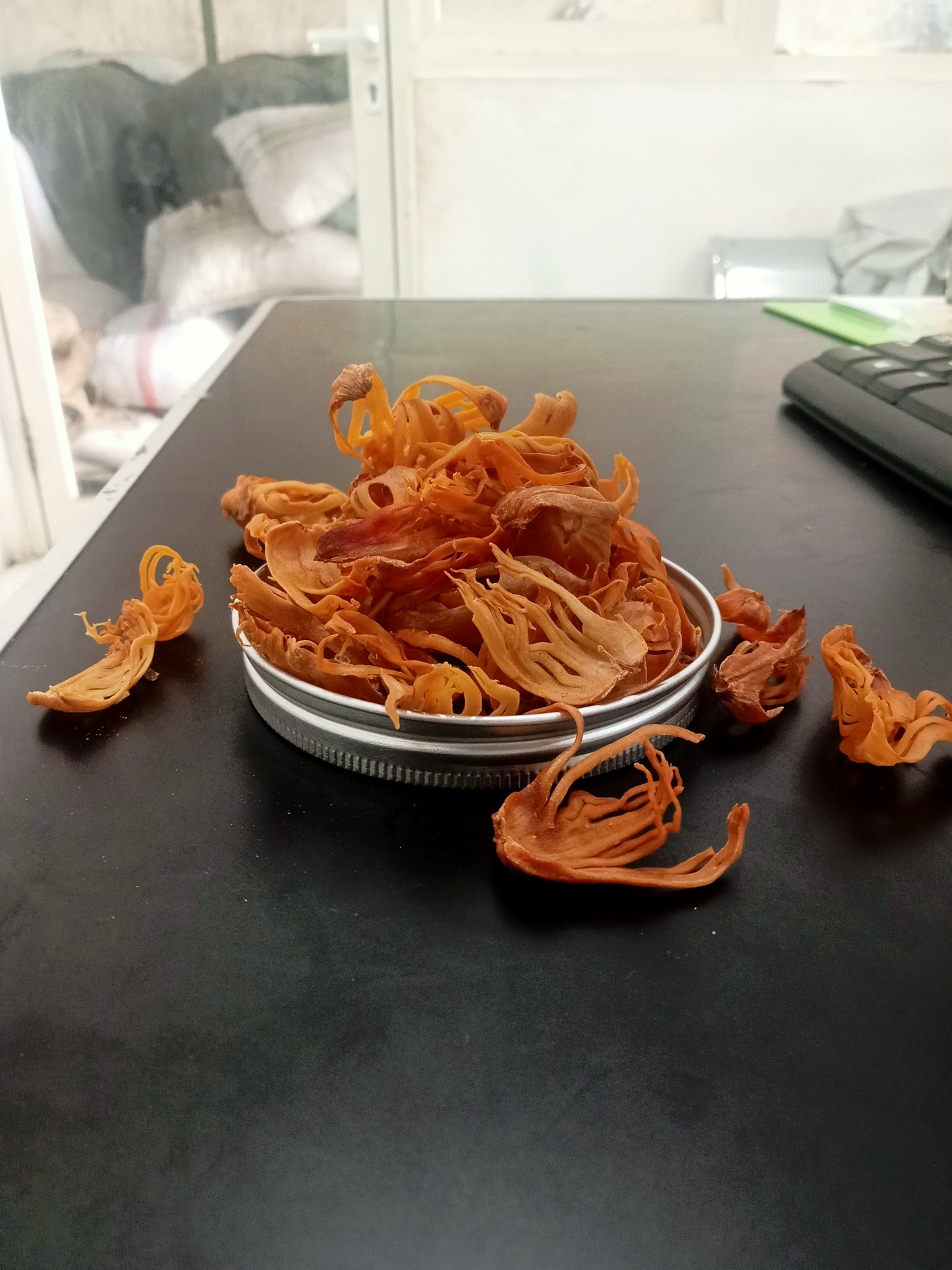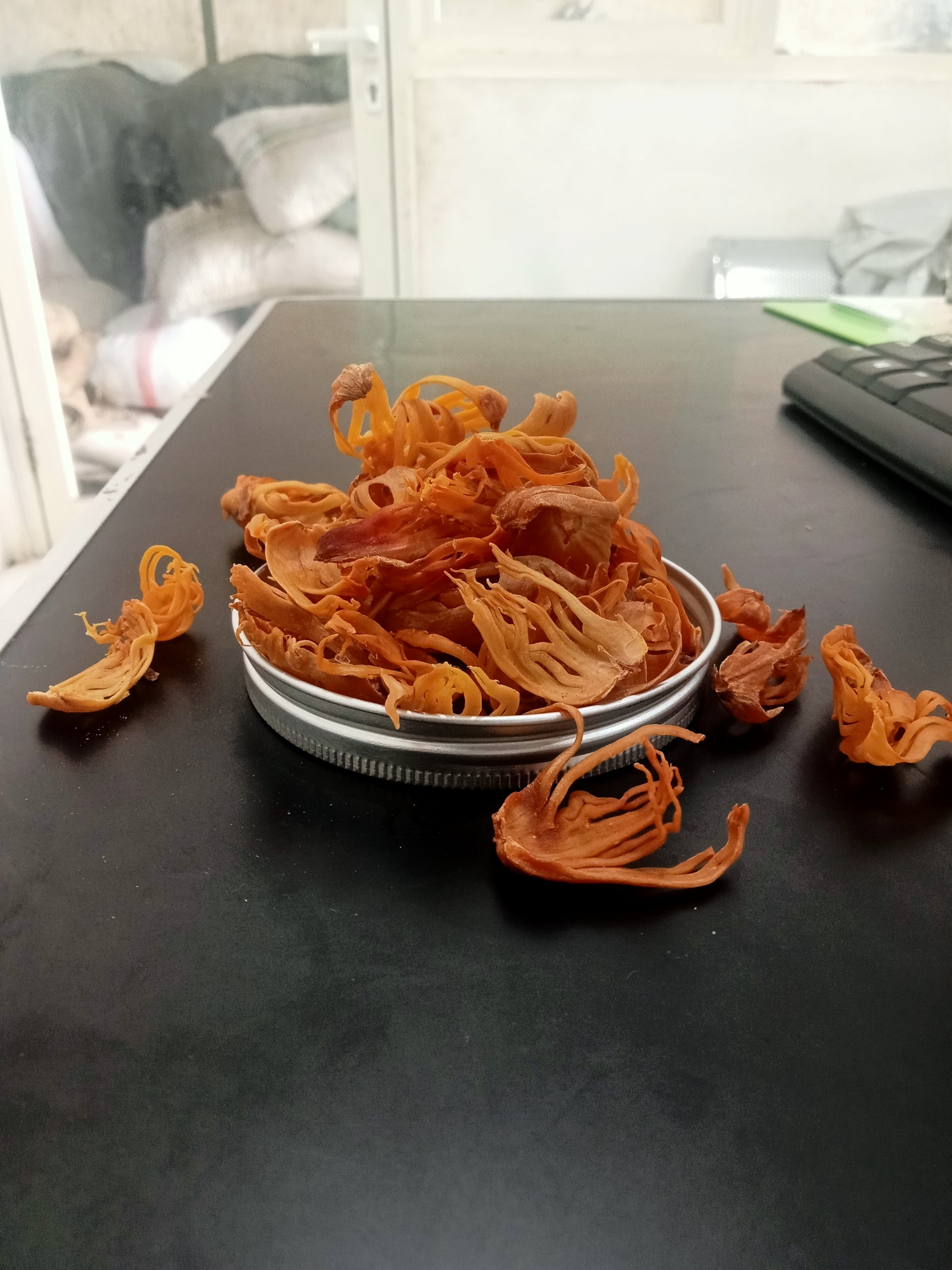starlaboratories.id
Mace siaw Manado
Mace siaw Manado
Mace Siaw (or Mace in general) refers to a spice derived from the aril (a lacy outer covering) of the nutmeg seed. The term "siaw" is commonly associated with mace in Southeast Asian and particularly Malaysian or Indonesian contexts, where the spice is used both in cooking and for medicinal purposes. In these regions, mace might be referred to as "siaw" or "siah" in local dialects.
What is Mace?
Mace is the dried aril (outer covering) of the nutmeg seed, which comes from the Myristica fragrans tree. The tree produces both nutmeg (the seed) and mace (the outer covering), with both being valuable spices. While nutmeg is typically ground into a powder and used in sweet and savory dishes, mace has a slightly different flavor profile and is used in various global cuisines, particularly in South and Southeast Asia.
Characteristics of Mace Siaw:
* Appearance: Mace is bright red or orange when fresh and turns a reddish-brown or pale brown color when dried. The dried pieces are often thin, papery, and lacy.
* Texture: The texture of dried mace is delicate, thin, and slightly brittle.
* Aroma: Mace has a warm, aromatic fragrance that’s more delicate and floral than nutmeg, with hints of cinnamon and cloves. It's less pungent but still very aromatic.
* Flavor: The taste is slightly sweet, peppery, and warm, with a hint of spice that is more delicate than nutmeg. It’s often described as a mix of cinnamon, nutmeg, and cloves.
Culinary Uses:
Mace Siaw (mace) is primarily used in cooking, especially in various traditional Asian, Middle Eastern, and European cuisines. It’s often used in dishes that require a nuanced and warming spice.
* Southeast Asian Cuisine: Mace is used in Indonesian and Malaysian dishes like *rendang* (a beef or chicken curry), gulai (a rich, spiced curry), and various rice dishes. It pairs well with meat, particularly in slow-cooked curries and stews.
* Indian Cuisine: In Indian cooking, mace is often included in garam masala (a warming spice blend) and is used in savory dishes like biryani or meat curries. It’s also used in Indian sweets, where its subtle warmth enhances flavors.
* Baking: Mace can be used in baked goods like cakes, cookies, and pies. It’s sometimes added to desserts like apple pie or spiced cakes to bring a hint of warmth without the overwhelming heat of some other spices.
* Beverages: Mace is sometimes used in hot beverages like mulled wine, chai, or even in some cocktails to add aromatic complexity.
Medicinal and Traditional Uses:
Mace, including Mace Siaw, has also been used in traditional medicine for various health benefits:
* Digestive aid: Mace is believed to stimulate appetite and aid in digestion, much like nutmeg.
* Pain relief: Some cultures use mace as a remedy for pain, particularly for headaches or muscle pain.
* Anti-inflammatory: Mace contains compounds that may help reduce inflammation, which is why it’s sometimes used in traditional remedies.
* Antioxidant properties: Like other spices, mace has antioxidant compounds that may help protect cells from damage.
How to Use Mace Siaw (Dried Mace):
* Grind Fresh: Mace is typically ground just before use to preserve its aroma and flavor, though it can be found in pre-ground form.
* Use in Small Quantities: Mace has a strong flavor, so you don’t need much to impart its warmth to a dish. A small amount (like a pinch or a couple of threads) is enough.
* Add During Cooking: Add mace to dishes during cooking to allow its flavor to develop. It’s best used in slow-cooked dishes or mixed into spice blends where its complex flavor can shine.
Order Now!
Budi Harto
Star Laboratories
Pergudangan Mutiara Margomulyo Indah C 15, Surabaya, Indonesia
Whatsapp/ Phone : +62 816 525 328
USD Price : $17.000/ton

Image with text
Pair text with an image to focus on your chosen product, collection, or blog post. Add details on availability, style, or even provide a review.






